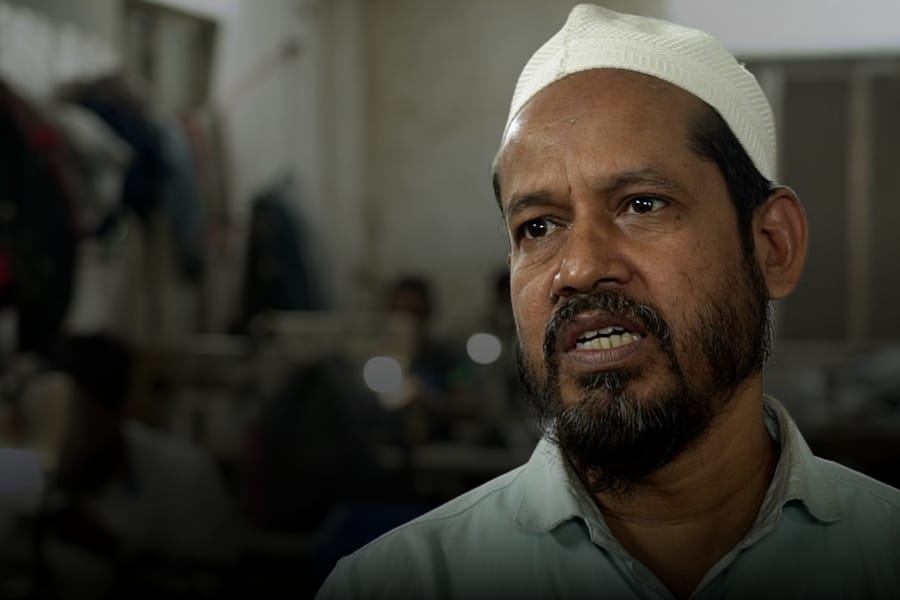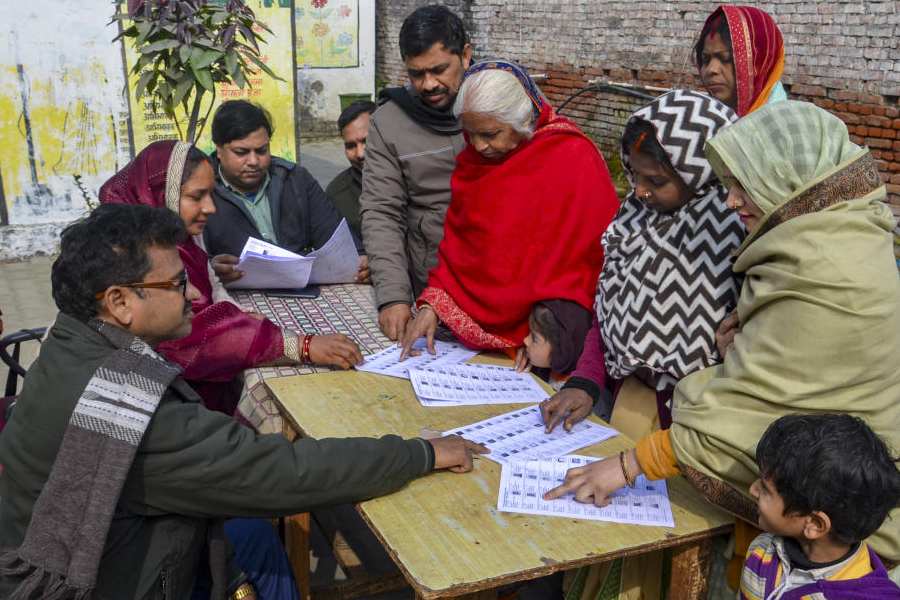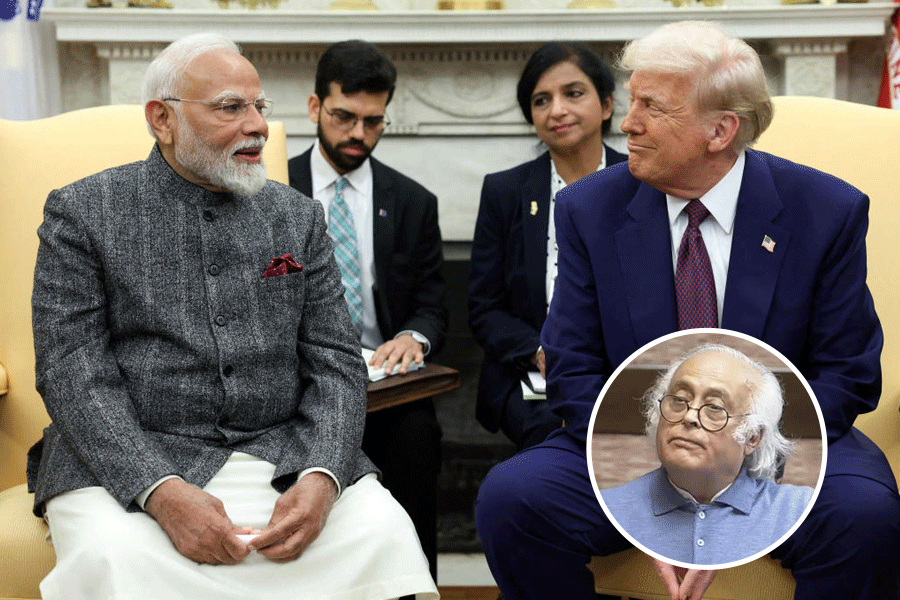 |
 |
| (From top) A devotee on her way to pour holy water on the linga at the Lingaraj temple and a group of female devotees at the Mukteswar temple in Bhubaneswar. Pictures by Sanjib Mukherjee |
Bhubaneswar, Aug. 9: For many it is an act of penance, while for some college-going girls, following the kanwariya tradition is more like a religious adventure.
Cries of bol bum (praise be to Lord Shiva) rent the air as a large number of devotees lined up to offer water at the Lingaraj temple this morning.
The saffron-clad kanwariyas have become a common sight in the twin cities of Cuttack and Bhubaneswar, for this is the Hindu month of Shravan.
Although mostly male devotees have been kanwariyas, women devotees of Lord Shiva too have begun following the religious tradition.
While it is devotional penance that drives many women to carry the kanwar (or pole), for college-going girls it is religious adventure. “I have been part of the bol bum yatra for the past three years. I believe this walk helps purify my conscience. I seek the blessings of the Lord while pouring water on the Shiva linga along with other devotees. This gives me huge positive energy,” said Mamata Das, a 30-year-old kanwariya from Kendrapada. College girls were also found queuing up in front of the Lingaraj temple today.
“I’m here with my friends. We’ve been watching the bol bum devotees on television since the past two weeks and so thought of making a trip to the temple together,” said Sasmita Mohanty, an undergraduate from Bhanjanagar.
“Our parents were initially reluctant about letting us come here because of security reasons. But when we persuaded them, saying that tight security arrangements have been made throughout Bhubaneswar and the Cuttack-Bhubaneswar highway, they agreed to let us go,” she adds.
“It was a wonderful adventure for us. The number of service centres set up by NGOs even offer free food for kanwariyas. They were very helpful,” said Sasmita’s friend. The girls added that they sought blessings for their forthcoming examination.
The kanwariya walk, which began as a north-Indian tradition, has become popular ever since Oriya devotees started following it in the 1990s, says Abani Pattnaik, an administrator of Lingaraj temple.











